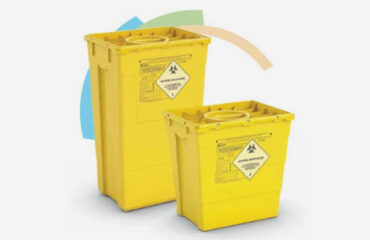The Only Guide to Reclaim Waste
Table of ContentsThe smart Trick of Reclaim Waste That Nobody is Talking AboutThe Single Strategy To Use For Reclaim WasteGetting The Reclaim Waste To WorkThe Best Guide To Reclaim WasteGetting The Reclaim Waste To Work
Check out the kinds, events, and types of fluid waste. Domestic sewage waste describes the waste and products from a household septic system. This sort of waste is developed by human beings in residences, schools, and various other structures. This only consists of septic systems that have a drain field. The correct administration and disposal of residential sewer waste require liquid waste to be transferred to a sewer treatment plant where the correct techniques and tools are related to cleanse and get rid of waste.
Business waste typically consists of prospective risks, such as combustible products or a mixture of liquid and strong waste items, and needs an extra sophisticated and thorough disposal process. The disposal of commercial waste usually includes the filtration of waste prior to transport to guarantee risk-free and proper disposal. Hazardous waste is produced from by-products and runoff of commercial processes and manufacturing.
This type of waste can not use the same sewer administration transport or procedures as septic or commercial fluids. The hazardous waste administration process calls for the inspection and screening of fluid waste before it goes through the disposal process (liquid waste removal). Runoff waste is the fluid waste that originates from runoff and excess stormwater in very inhabited locations or cities
Drainage waste can create contamination and flooding if not managed appropriately. Making sure correct waste administration can prevent disasters and reduce environmental injury.
The 2-Minute Rule for Reclaim Waste
Call PROS Solutions today to discover our waste administration and disposal services and the correct means to look after the liquid waste you generate.
(https://www.find-us-here.com/businesses/Reclaim-Waste-Laverton-North-Victoria-Australia/34166924/)Do you understand what happens to your water when you end, flush the toilet or drain pipes the washing device? No? Well, it's worth knowing. This supposed 'wastewater' is not only an essential resource but, after treatment, will be launched to our land, rivers or the sea. Utilized water from bathrooms, showers, baths, kitchen area sinks, washings and commercial procedures is understood as wastewater.

water used to cool down machinery or clean plant and tools). Stormwater, a type of wastewater, is overflow that streams from farming and metropolitan locations such as roof coverings, parks, gardens, roads, paths and seamless gutters into stormwater drains pipes, after rain. Stormwater moves without treatment straight to neighborhood creeks or rivers, at some point getting to the ocean.
The Definitive Guide for Reclaim Waste
In Queensland, many wastewater is dealt with at sewer treatment plants. Wastewater is transferred from residential or industrial sites through a system of sewers and pump stations, known as sewerage reticulation, to a sewer therapy official site plant.
The Division of Natural Resources encourages regional governments regarding managing, operating and maintaining sewage systems and treatment plants. In unsewered locations, city governments might call for owners to mount private or family sewer therapy systems to treat residential wastewater from bathrooms, kitchens, bathrooms and washings. The Division of Natural Resources authorizes the usage of household systems when they are confirmed to be effective.
In some new subdivisions, therapy of some stormwater to eliminate litter, sand and gravel has begun utilizing gross toxin catches. Wastewater therapy occurs in four phases: Eliminates strong issue.
Wastewater after that streams into huge tanks where solids settle and are removed as sludge. Grease and residue are skimmed from the surface area. Makes use of little living microorganisms recognizes as micro-organisms to damage down and eliminate continuing to be dissolved wastes and great particles. Micro-organisms and wastes are incorporated in the sludge. Removes nitrogen and phosphorus nutrients that can trigger algal blossoms in our rivers and intimidate aquatic life.
Some Known Questions About Reclaim Waste.
Nutrient elimination is not available at all sewage therapy plants since it needs pricey specialized devices. It is ending up being extra usual in Queensland. Clear fluid effluent created after treatment might still contain disease-causing micro-organisms. If this effluent is released right into rivers such as rivers or the sea, the micro-organisms will at some point pass away out.

Most wastewater flows into the sewerage system. Under the Act, regional governments provide approvals and licences for ecologically relevant tasks (Periods) involving wastewater launches that may have a neighborhood impact.
4 Easy Facts About Reclaim Waste Shown
Otherwise, examples are considered laboratory analysis. Often numerous examinations are required to develop the levels of each of the various toxins such as oils, hefty metals and pesticides in water. Monitoring provides accurate information regarding water quality and can verify that permit conditions are being met. The info acquired with tracking supplies the basis for making water high quality choices.